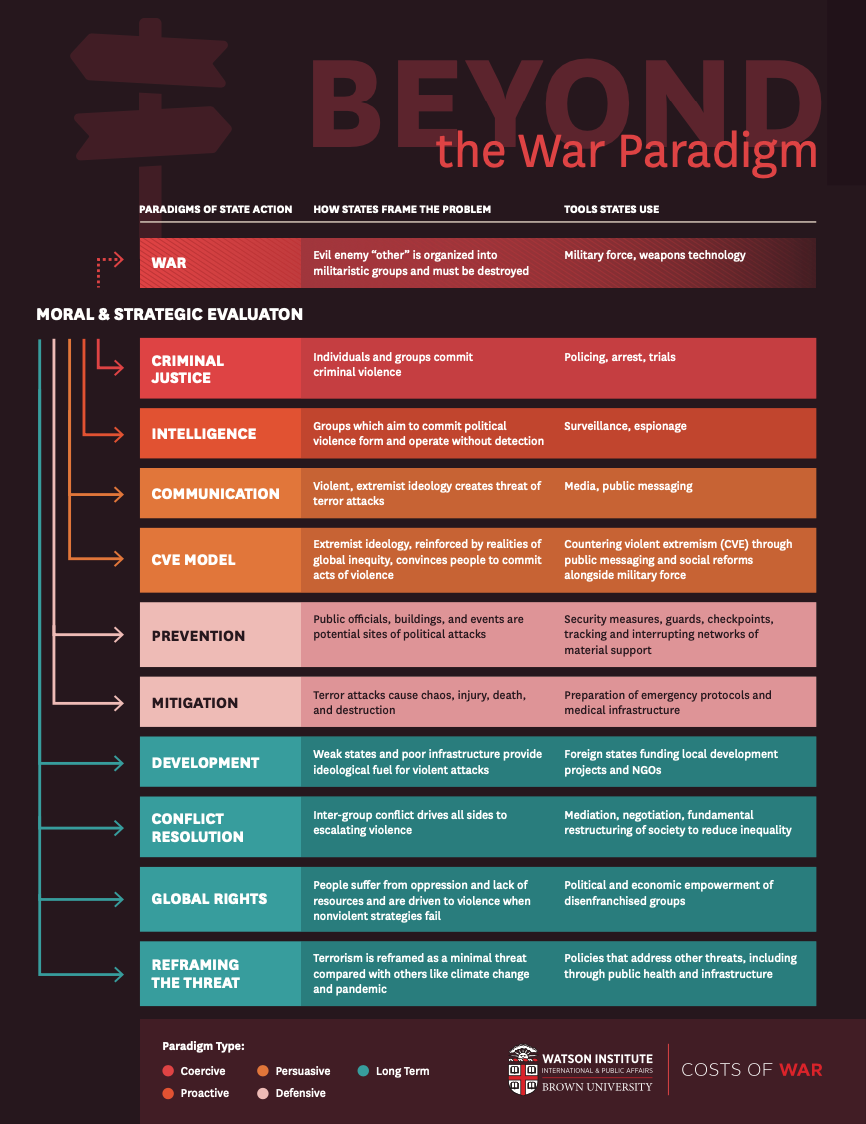Beyond the War Paradigm: What History Tells Us About How Terror Campaigns End

This paper examines both historical and theoretical alternatives to the war paradigm for counterterrorism and suggests the need for reframing predominant understandings of global security around far more significant threats, including those posed by climate change and healthcare insecurity.
Since 9/11, U.S. media, politicians, and security experts have produced a deluge of pro-war content, establishing and further normalizing a paradigm that treats war-making as the natural response to terror attacks. At the same time, research has shown that government violence against people in the name of counterterrorism, wartime destruction of infrastructure, and long-term U.S. military presence abroad breed ill-will toward the United States and broaden support for the same groups that the U.S. post-9/11 wars officially aim to eliminate.
By reviewing a wide range of relevant literature from scholars and think tanks, this paper explores some of the most robust non-military models of counterterrorism and outlines eleven paradigms and the implicit assumptions of the states and experts who employ them about the problem of terrorism. The accompanying infographic separates state-led models of counterterrorism into the categories of “coercive,” “proactive,” “persuasive,” “defensive,” and “long-term.”
Deaths caused by governments in the name of counterterrorism vastly exceeds deaths caused by militant groups who use terror tactics. Between 1995 and 2019, the National Consortium for the Study of Terrorism and Responses to Terrorism (START) calculated that 3,455 U.S. citizens were killed in terror attacks. In contrast, Costs of War data has shown that the U.S. post-9/11 wars have directly killed over 929,000 people. Meanwhile, between 2001 and 2021, the U.S. poured $8 trillion into counterterrorism warfare.

